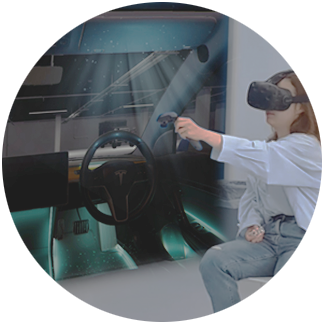Taesu Kim, a Ph.D. candidate in the Color lab has published an article entitled, “Sketching in-vehicle ambient lighting in virtual reality with the Wizard-of-Oz method” in Digital Creativity. This study proposed a virtual reality-supported lighting sketching system for in-vehicle ambient lighting. He conducted six design workshops for investigating the effect of virtual reality while sketching in-vehicle lighting. As a result, he found that virtual reality can boost the iteration process by providing an affordable interface. Also, it could provide a more realistic environment while sketching. Finally, it can make designers immerse in the target product. He looks forward to this research that can contribute to vehicle designers easily adopting vehicle lighting on their vehicle design.
Abstract
Designers desire to sketch their concepts and produce prototypes in a real-time setting. This study developed a virtual reality (VR) supported lighting sketch tool for vehicle interior designers. The tool incorporated lighting design with drag-and-drop functionality and high-definition vehicle rendering. The tool also used the Wizard-of-Oz method to help design participants easily immerse themselves into the design tasks. Six designers participated in two consecutive hour-long design workshops to evaluate the design tool. Each designer sketched eight scenarios, and the workshop gathered 48 design outcomes. In addition, a thirty-minute post-interview evaluated usability, the immersive experience of the virtual environment, and the expected role of the wizard. Finally, thematic coding was used on both workshop and post-interview verbal records to further evaluate the tool’s compatibility. As a result, three vital roles of the tool were identified. First, the tool encouraged the iteration process. The tool also gave realistic design-practice experiences and would be suitable for sketching lighting in the workplace. Finally, the tool allowed designers to immerse themselves in the design space. This research anticipates a well-illustrated virtual context and situations that invite designers into an inspirational lighting design workplace.
